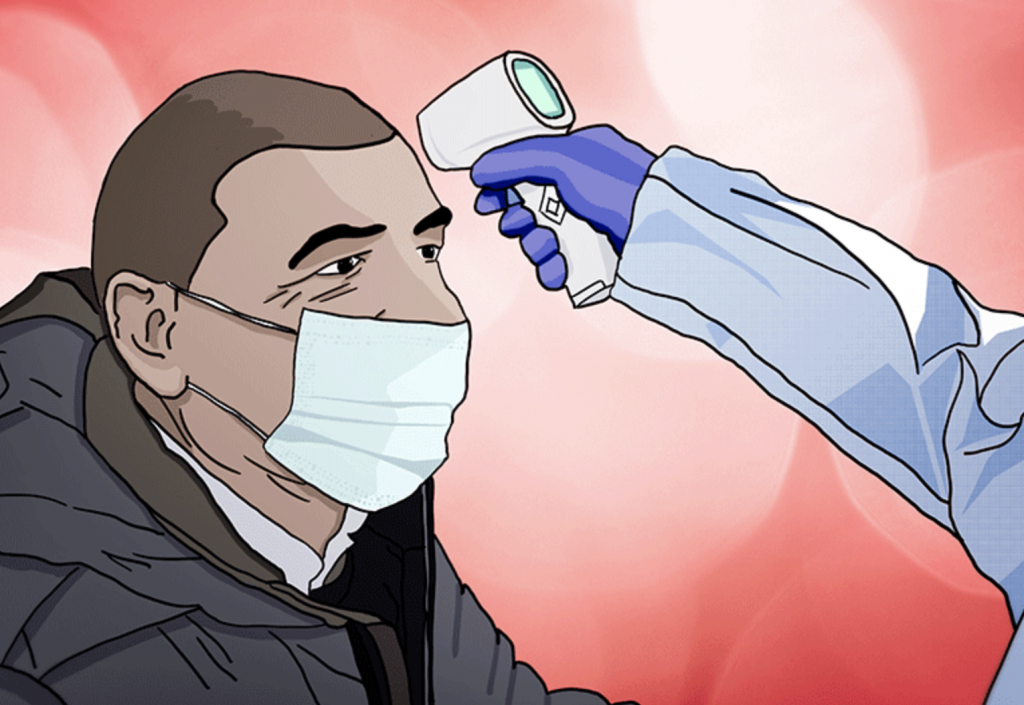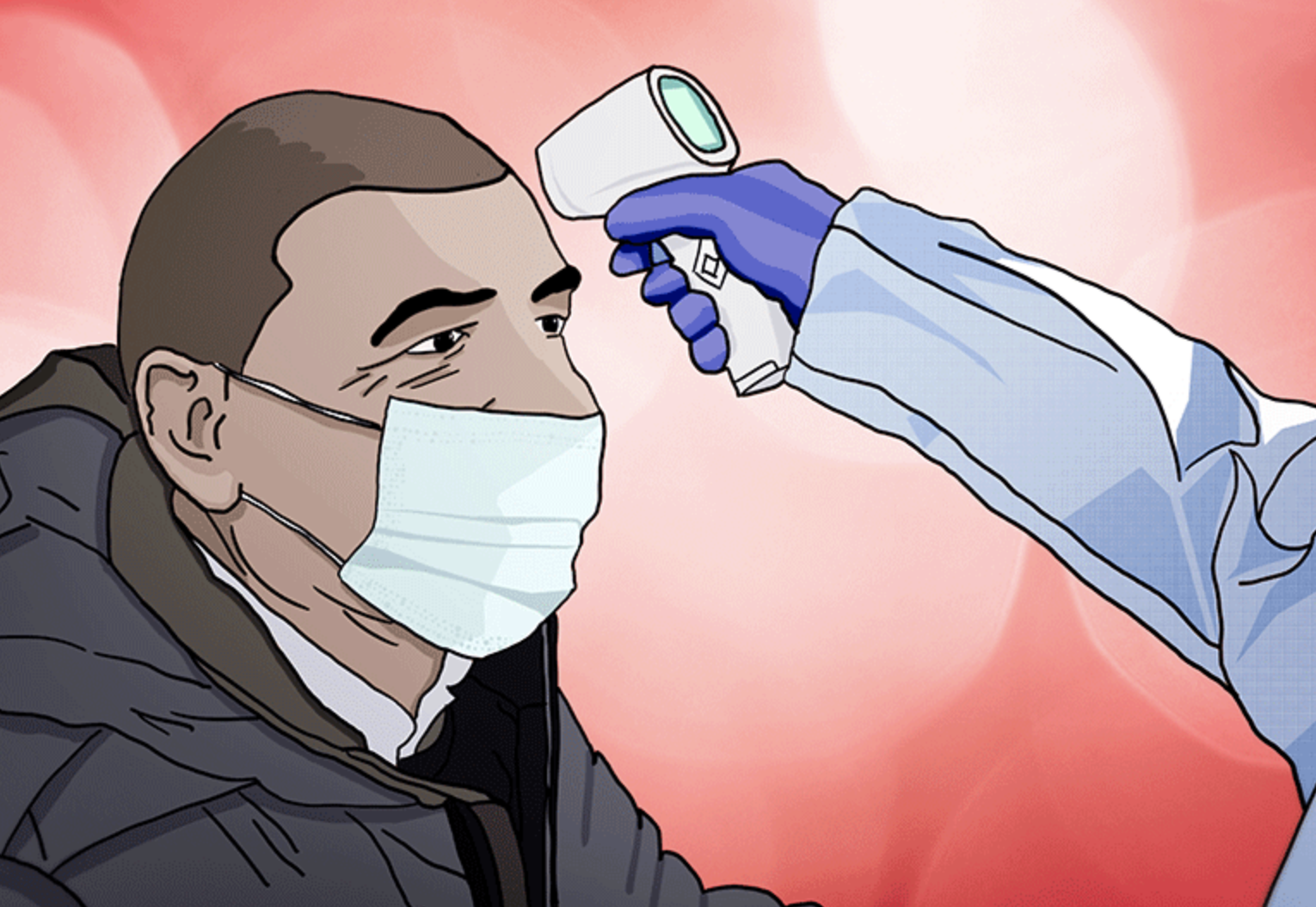
As COVID-19 (coronavirus disease) continues to affect our daily lives, it is crucial for employers to be aware of the measures the government is taking to reduce infection, how those measures affect your business, and the protocols your business needs to implement to ensure you are complying with what is required. Because the national response is changing daily, it is important to remain up-to-date on new laws, regulations, and government mandates as they rapidly begin taking effect.
Employer Screening and Examinations
In response to the COVID-19 pandemic, the Equal Employment Opportunity Commission (EEOC) referred employers to an advisory opinion the EEOC published in 2009 amidst the H1N1 (“swine flu”) outbreak. In its 2009 advisory opinion, the EEOC implemented a temporary waiver of certain provisions of the Americans with Disabilities Act (ADA), taking the position that illnesses related to global pandemics are dissimilar to the disabilities that the ADA was designed to protect, and calling for more flexibility in allowing employers to conduct medical examinations and screenings in the workplace provided the employer reasonably believes such action is necessary to address a direct threat to the health or safety of the workplace.
The EEOC subsequently announced that the spread of COVID-19 qualifies as a “direct threat” allowing employers to conduct employee examinations and screenings to ensure the health and safety of others in the workplace. During these examinations, an employer may ask an employee if he or she is experiencing any COVID-19 related symptoms or has been in contact with anyone who has been diagnosed with COVID-19 or is experiencing COVID-19 related symptoms. The employer may also inquire about the employee’s recent travel history or the reason for any recent work absence. The EEOC has also authorized employers to take employee’s temperatures to determine if their employee has a fever, which is a symptom of COVID-19.
Ultimately, any medical information employers receive from an employee during one of these screenings, examinations, or otherwise, must remain confidential. If an employee is confirmed to have COVID-19, employers should inform other employees about their potential exposure to the virus, but the identity of the infected employee must remain confidential to the extent possible.
With that being said, employers must be careful not to violate any state, federal, or local laws when implementing new protocols designed to prevent the spread of COVID-19. For instance, employers should implement all such protocols uniformly amongst all employees to avoid violating anti-discrimination laws (e.g., if an employer chooses to send an employee home for exhibiting COVID-19 symptoms, it should also send home all other employees exhibiting such symptoms). Further, any questions asked during employee screenings must be related solely to the possibility of workplace exposure to COVID-19, and must avoid inquiries into unrelated health conditions or disabilities.
Workplace Safety Standards
The General Duty Clause of the Occupational Safety and Health Act (OSHA) requires employers to keep their workplaces free from recognized hazards that are causing, or are likely to cause, death or serious physical harm. While it remains to be seen whether OSHA considers COVID-19 to be a “recognized hazard,” employers would do well to treat COVID-19 as such, and take reasonable steps to mitigate or eliminate the hazard. Accordingly, employers must be cognizant of potential health risks posed by certain employees and implement protocols for employees to remain safe during a potential outbreak. Additionally, COVID-19 may be considered a recordable illness pursuant to 29 C.F.R. 1904 – Subpart C. For example, an outbreak of an infectious disease or similar illness occurring at a medical facility may be considered a recordable illness, under the Code of Federal Regulations, if such an outbreak is an illness resulting from events or exposures occurring in the work environment. Please note, however, that the Bloodborne Pathogens standard found in 29 C.F.R. 1910.1030, which requires employers take certain measures during the outbreak of a bloodborne pathogen, does not apply in the response to COVID-19.
Employers may visit OSHA’s website (https://www.osha.gov/SLTC/covid-19/standards.html), which provides an employer’s guide to COVID-19 for more general guidelines and tips for maintaining a safe workforce during this outbreak.
Additionally, the Center for Disease Control (CDC) has issued guidance to employers regarding when to send employees home and/or prohibit them from returning to work for COVID-19 related reasons. While the CDC guidelines are discretionary for many employers, they represent valuable resources and standards for employers to utilize amidst this unprecedented pandemic.
Employee Pay and Benefits
The recently enacted Families First Coronavirus Response Act (FFCRA) includes two significant laws of which employers should be aware: the Emergency Paid Sick Leave Act and the Emergency Family Medical Leave Expansion Act.
Emergency Paid Sick Leave Act: Under the Emergency Paid Sick Leave Act, private sector employers with fewer than 500 employees are generally required to provide employees paid sick leave if the employee is unable to work because the employee is:
- Subject to a government quarantine or isolation order;
- Following the advice of a healthcare professional to self-quarantine;
- Experiencing symptoms related to COVID-19 and is seeking a medical diagnosis;
- Caring for an individual subject to a government order set forth in (1) above, or who has been advised by a healthcare professional to self-quarantine as set forth in (2) above;
- Caring for a child whose school or childcare is closed due to COVID-19 precautions; or
- Is experiencing “any other substantially similar condition specified by the secretary of Health and Human Services in consultation with the secretary of the treasury and the secretary of labor.” (While the Secretary of Health and Human Services has not yet specified conditions it considers “substantially similar,” the FFCRA empowers the Secretary to do so in the near future.)
The amount of emergency paid sick leave you must pay an employee depends on the employee’s reason for leave. If the employee is entitled to leave under reasons 1 through 3 above, the employee must receive his or her regular pay rate, capped at $511 per day (and $5,110 in the aggregate). On the other hand, if the employee is entitled to leave under reasons 4 through 6 above, you are only required to pay the employee two-thirds of his or her regular rate of pay, capped at $200 per day (or $2,000 in the aggregate).
Full-time employees are entitled to up to 80 hours of emergency paid sick leave, while part-time employees are entitled to the equivalent of the average hours they work during a two-week period.
Employers may not require an employee use any accrued sick leave or paid time off in lieu of, or before, using the paid sick leave to which an employee is entitled under the Emergency Paid Sick Leave Act. Employers must also post in a “conspicuous” workplace location a notice containing information regarding the requirements of the Emergency Paid Sick Leave Act. Copies of the notice are available on the DOL’s website.
Emergency Family Medical Leave Expansion Act: The Emergency Family Medical Leave Expansion Act (EFMLEA) amends the pre-existing Family Medical Leave Act (FMLA) to add one new qualifying reason for job-protected leave: when employees are unable to work (or telework) because they must care for their child whose school or childcare is closed due to COVID-19 precautions. Generally, this new basis for family leave applies to all private employers with fewer than 500 employees and to any employee who has worked for the employer for at least 30 days.
An employee receiving emergency family leave under this new law is entitled to up to 12 weeks of job-protected leave with continuing group health insurance coverage. The first two weeks of emergency family leave is unpaid, after which the employer must pay the employee two-thirds of the employee’s regular pay rate, capped at $200 per day (or $10,000 in the aggregate), for any additional emergency family leave the employee takes.The employee’s emergency family leave will end when the employee’s need for leave ends or when the employee has exhausted his or her 12 weeks of leave. When the employee’s emergency family leave ends, the employer generally must reinstate the employee to either his or her same position or an equivalent position.
Small Business Exemption: Companies with fewer than 50 employees may be exempt from the requirement to provide paid leave to employees who seek leave to care for a child whose school or childcare is closed due to COVID-19 precautions. While this represents a limited exemption to the Emergency Paid Sick Leave Act (small businesses must still provide paid sick leave for the remaining five qualifying reasons), it represents a complete exemption to the Emergency Family Medical Leave Expansion Act. To qualify for the small business exemption, an authorized officer of the company must determine that one of the following is true about the employee’s leave request: (1) payment of leave will cause the business’ expenses/liabilities to exceed available revenues; (2) the employee requesting leave has specialized skills, knowledge, or responsibilities, such that their absence would entail substantial risk to business operations; or (3) there are insufficient workers available to perform the work of the employee requesting leave and the work is essential to operations.
Mass Layoffs
If your business is covered by the Worker Adjustment and Retraining Notification (WARN) Act, you are generally required to provide affected employees at least 60 days’ notice before a mass layoff or plant closure as defined by the Act. However, the normal 60 days’ notice may not apply if the mass layoff or closure is due to the effects of COVID-19 if that reason meets the “unforeseeable business circumstances” exception to the WARN Act. However, even where the unforeseeable business circumstances exception applies, a covered business is still required to give its employees as much notice as is reasonably practicable. Employers should also be mindful of potential state laws similar to the Federal WARN Act, and ensure that any mass layoff or closure complies with any such analogous state law.
About the authors: Benjamin Briggs is a Partner at Cotney Construction Law who represents clients in all aspects of labor and employment law. Elliot Haney is an Attorney at Cotney Construction Law who practices in all areas of construction law. Cotney Construction Law is an advocate for the roofing industry and serves as General Counsel for NRCA, FRSA, RT3, NWIR, TARC, WSRCA and several other roofing associations. For more information, visit www.cotneycl.com.
Author’s note: The information contained in this article is for general educational information only. This information does not constitute legal advice, is not intended to constitute legal advice, nor should it be relied upon as legal advice for your specific factual pattern or situation.




Be the first to comment on "How Employers Should Respond to COVID-19"